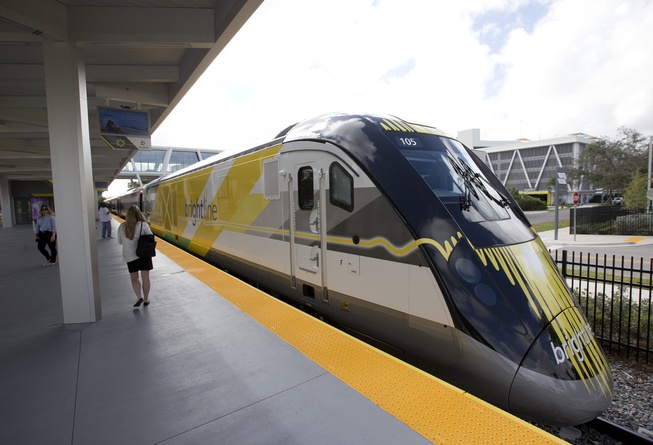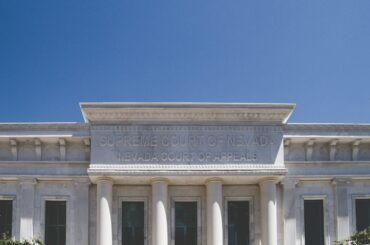A bipartisan group of lawmakers from California and Nevada has asked the Biden administration to speed up federal funds for a private company to build a high-speed rail line between Las Vegas and the Los Angeles area. The proposal from Brightline West would lay tracks along the Interstate 15 corridor, potentially cutting the current four-hour trip in half, with trains traveling at nearly 200 mph. The $10 billion project could be the blueprint for how to connect major city pairs that are too short to fly and too far to drive, according to Mike Reininger, CEO of Brightline Holdings LLC.
In a letter to U.S. Transportation Secretary Pete Buttigieg, all six of Nevada’s elected federal representatives and four Californian House members asked for $3.75 billion in funds from the Biden administration’s federal infrastructure package. The Nevada-California project’s draft environmental assessment was made available to the public in October 2022, and the Federal Railroad Administration is anticipated to issue permits in July. The company stated that a combination of loan and equity will make up around 70% of the capital.
The Southern Nevada Building Trades Union and the corporation have both made recent announcements stating that union labor will be utilized throughout construction. Las Vegas, Victorville, California; Rancho Cucamonga, a community in San Bernardino County; and a passenger station on a suburban Los Angeles light rail route would all be connected by Brightline West trains. The initiative could result in 35,000 construction employment, 1,000 long-term jobs, and a decrease in greenhouse gas emissions from transportation.
The project will improve southern Nevada’s accessibility to millions of tourists annually, strengthen the local economy, and generate more well-paying employment, according to the senators’ letter. The COVID-19 outbreak halted efforts to create a bullet train through the Mojave Desert, but the concept at least dates back to 2005 under various names and has been started and stopped throughout the years.
In Florida, the sibling company of Brightline West started sharing the Florida East Coast Freight Line in 2014 between Miami and West Palm Beach and is now constructing an expansion to Orlando. High-speed trains operating through cities have come under fire for frequent collisions with cars at railroad crossings. The majority of the fatalities, according to investigators, were caused by suicide, reckless driving, or people attempting to outrun trains.
A 500-mile (805-kilometer) system connecting Los Angeles and San Francisco and a route running from Dallas to Houston in Texas are two further locations where high-speed trains have been suggested. The California line, however, is dependent on finance and other unknowables. According to a report from the California High-Speed Rail Authority from 2023, environmental clearance has been acquired for 422 miles (679 kilometers) of the project in California’s Central Valley, and work is now under way for 119 miles (191 kilometers). Cost projections have risen to more than $100 billion, a significant increase from the $33 billion approved by voters in 2008.
In Texas, the fast rail project is being held up by rising costs, a lack of legislative support, and opposition from farmers, ranchers, and other landowners who objected to having their land divided by a train traveling at 200 mph more than 30 times each day, according to a study released last month by the Reason Foundation, a libertarian think tank. It stated that a provision barring the use of any funding for the project was passed by the Texas Legislature.
The proposal by Brightline West might serve as a template for tying together significant city pairs that are too close to fly and too far to drive. The Nevada and California delegations, which are both partisan, are happy to support the federal funding required to build the vital transportation links along this heavily traveled route. The project has the potential to improve accessibility to southern Nevada, cut greenhouse gas emissions, and create thousands of jobs.



